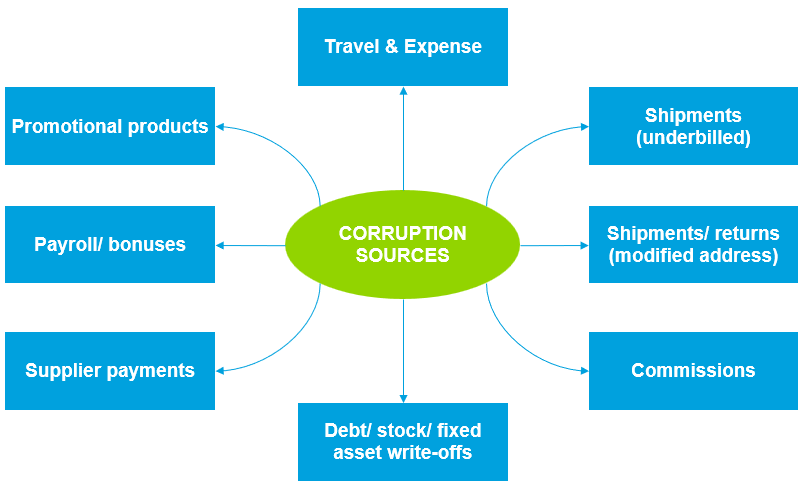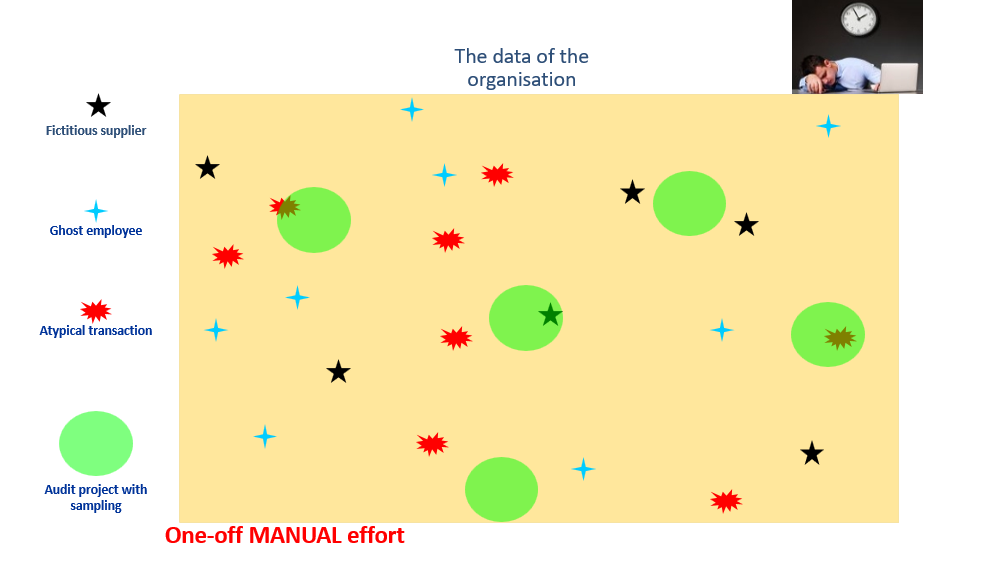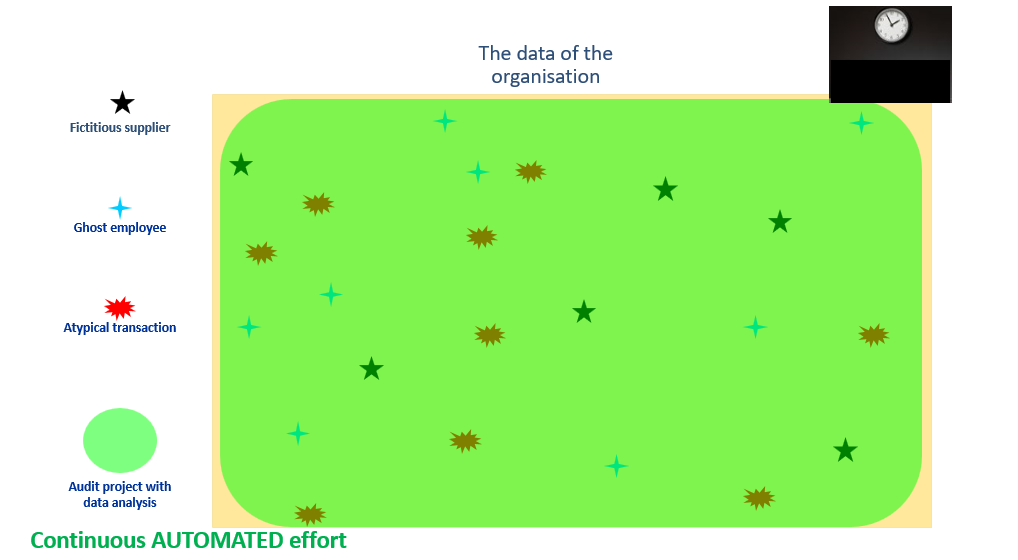Introduction of SAP TCODE in data analytics for auditors
Why do we actually want to use SAP TCODES...
…when we’re doing some data analytics, might be something about corruption. Here I’m talking about corruption. People often say to me, corruption, it’s like, you can’t do data analytics for that.
You can, because corruption, the money comes from somewhere, right? Unless you’re really generous, you’re probably not going to give a customer a bribe out of your own pocket. So you’re going to find a way to get that thing out of the company. And it could be one of these things like travelling expense or free goods, or, you know, a fixed asset you give to somebody, or it could be anything like that.
So we can do a whole lot of data analytics to find out if we’ve got indicators of corruption. And we can have all these questions, you know, these are the other types of questions we might have about corruption. And corruption is just one branch of the fraud tree. It’s the first branch. There’s also asset misappropriation and financial statement fraud and all that. But if we’re just looking at this first branch, there’s all these questions that we might have.
And data analytics is something that’s going to help us to see where we might have issues and all these things, right. And it’s a little bit like, you know, if you’re doing sampling, then you’re going to find it quite hard to find the thing that is not going well in the entity. So it’s a little bit like the green spots, you might be lucky, but you might not be lucky.
And also, the other thing is, we’ve got this, this guy up here, and he’s falling asleep, because all this work about sampling is like so much hard work, and effort, and takes a long, long time to do. And so if you’re doing data analytics, you can actually cover the entire population. And you can be able to pick things out, if you’ve got like an automated data analytics method for finding things that are going wrong in your company.

So what about SAP TCODES? Because we’re not here to talk about data analytics, we’re here to talk about SAP TCODES, right? So why would you even use SAP TCODES? Now, if you are in internal audit, and you’re doing some data analytics, then you actually want to check if those data analytics are correct, right, before you actually go and tell someone about your amazing results. Because, you know, sometimes we do get stuff wrong, sometimes it’s something we didn’t think about.
It’s always really good if we can actually check things. And that’s one, that’s for me, like, it’s the main reason why I would actually want to use data analytics, right? So we want to get away from, like, doing a random sample. So a random sample would be like, you just get an entire, like, list of data, or not, maybe just get an Excel file from somebody in the entity, and then you take 25, and then, you know, how much of a coverage you’re going to get, it’s not going to be very much.
Whereas in a focus sample, we’re talking about doing some data analytics first. So here, we’ve got a little dashboard about fictitious suppliers. And those that don’t have, I think it’s, if I look at it, it’s quite small. But those that like, maybe, I think it’s maybe like fictitious players, and then those that don’t actually have a purchase order, and where are they. And once we actually find those suppliers on a dashboard, then we want to actually check in SAP to verify what it is that we found. Okay, so is we got a higher chance of finding an issue, but we want to use the SAP T codes, because the SAP TCODES is going to help us to actually verify our focus sample.


So before we get started, I don’t know how, like, good you are using SAP TCODES, if you’re new to it, or if you’re really into using them all the time. But a few quick tip that you can have when you’re using SAP TCODES. And the first one is that you can put a slash n when you want to change from one transaction code to another one.
And another one is that you’ve got this little clock here, sometimes you have to click on, sometimes you just do enter, and sometimes you have to click on a clock when you actually want to run a TCODE. And one thing I should mention actually here is that this is all based on ECC6. So if you’ve got SAP 4-Hana, and you’re only auditing SAP 4-Hana, really sorry about that.
And these things are kind of similar, but some things in SAP 4-Hana are improved. So another thing, if you’re doing like data analytics on one side, and then you’re doing some SAP, like looking up of transaction codes on the other side, sometimes we’re actually using SAP to help us to know like, where do we get the data from? And what you can do sometimes is go into an SAP screen where you’ve got the thing like the thing that you really want to analyse that might be cost centre or payment terms or something to pricing.
And you want to know where does that information come from which table is in, then you can do F1 for help. And you can click on a little hammer. And then you get to see what kind of data is based on.
So that’s a really useful tip. If you’re a geek like me, and you’re doing some data analytics on SAP, you just want to find out where is that data.
